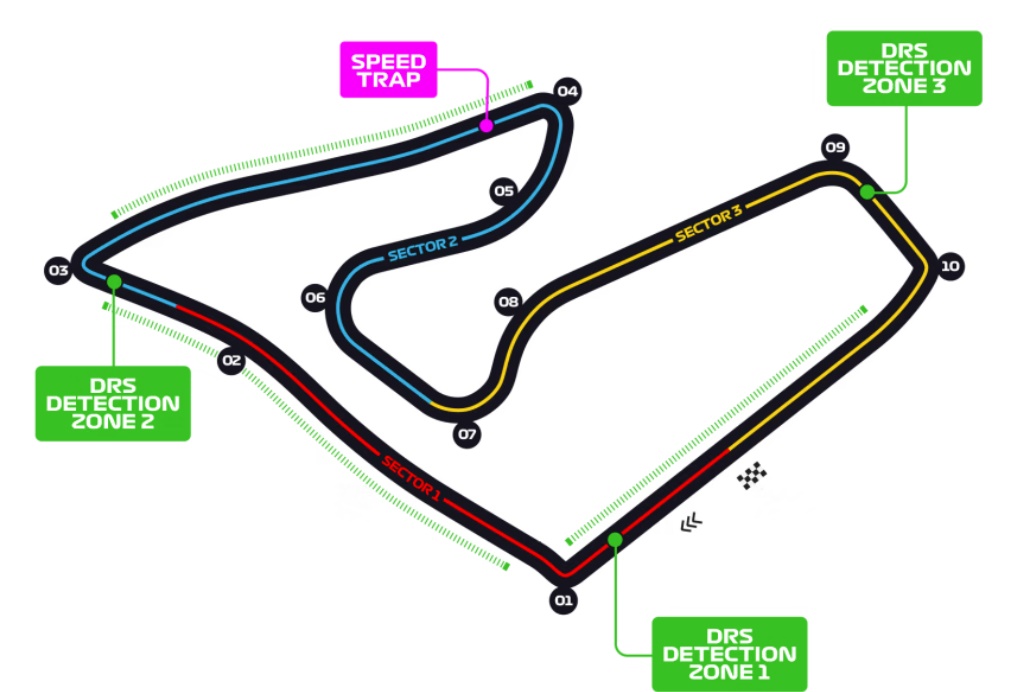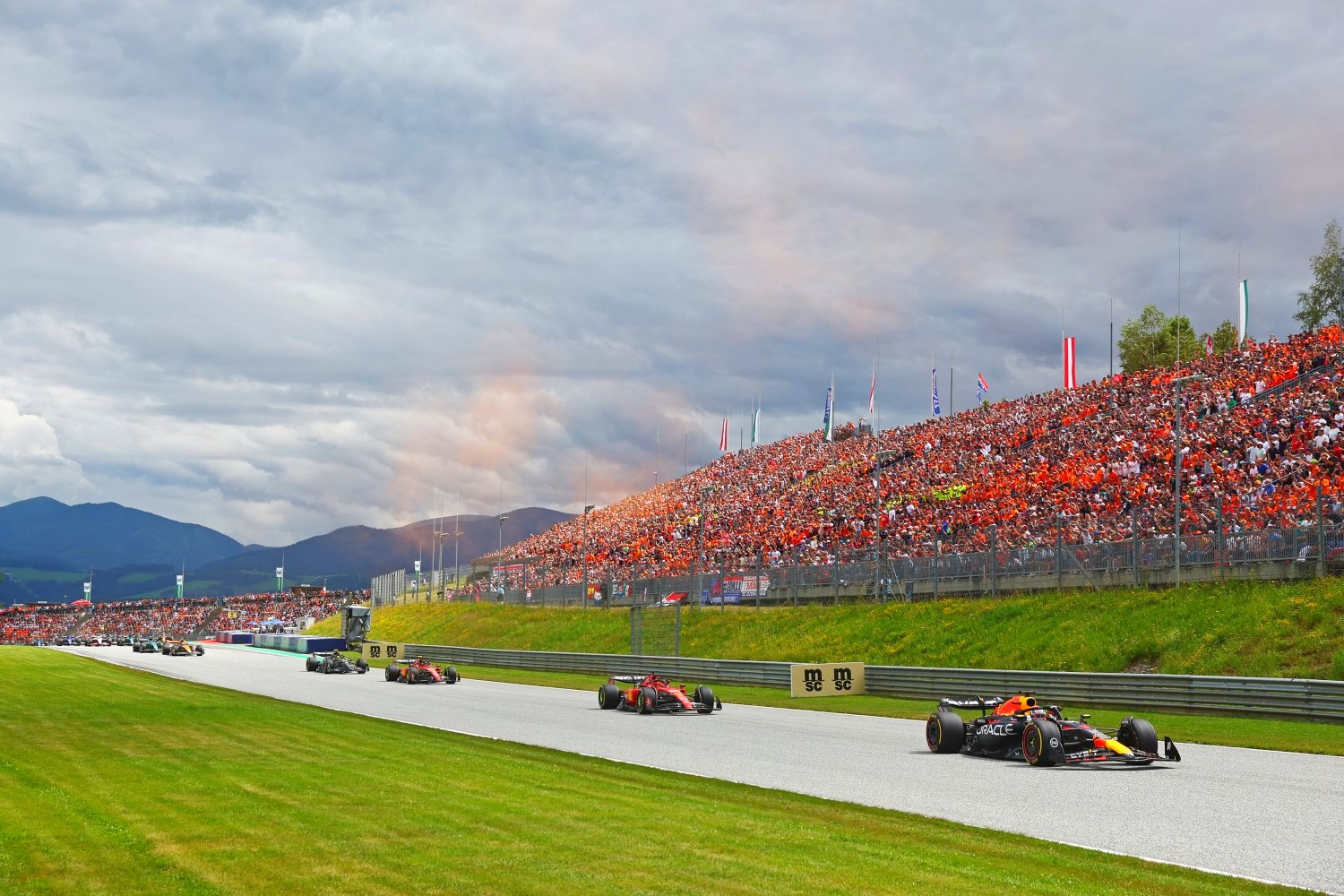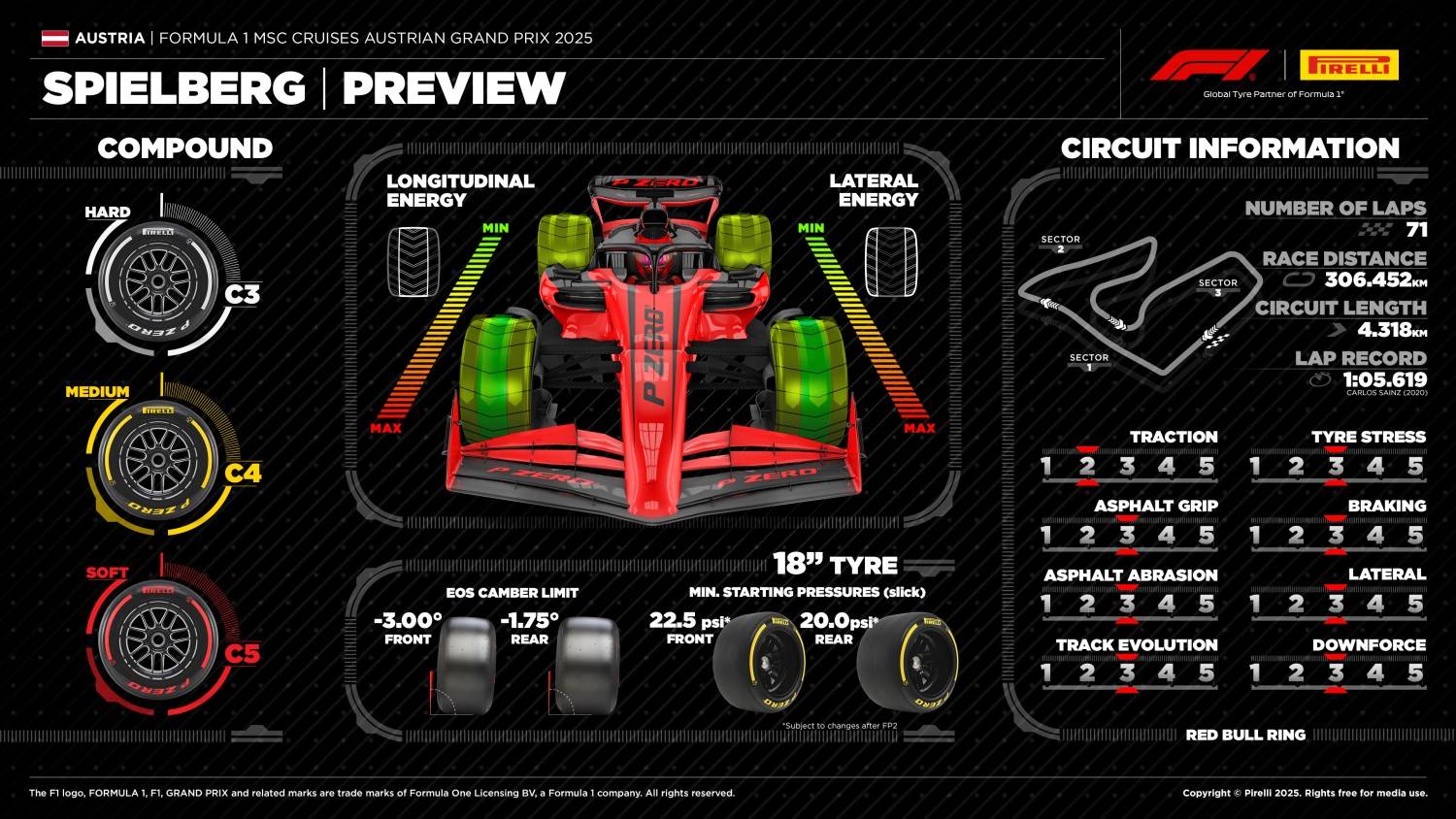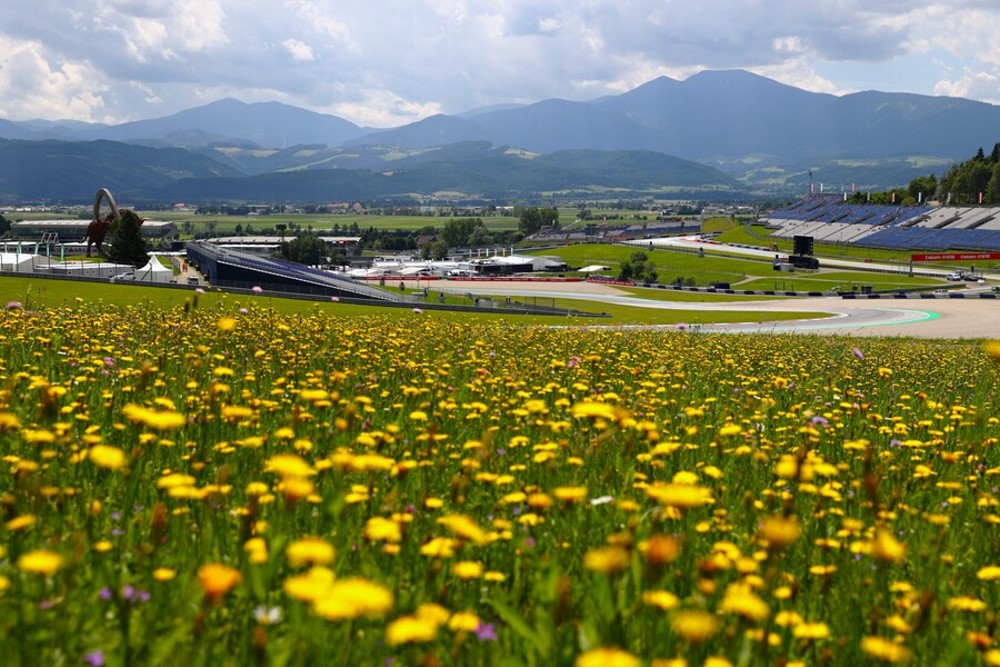Formula 1 News: 2025 GP of Austria at the Red Bull Ring Preview
Round 11 of the 2025 FIA Formula 1 World Championship takes the 10 F1 teams to the Red Bull Ring, for the GP of Austria.
Austria joined the Formula 1 calendar in 1964, though a rudimentary circuit at Zeltweg Airport was unpopular, and when the championship returned in 1970 it did so at a new venue nearby.
The verdant hills above the charming village of Spielberg were turned into a high-speed undulating race track, and the Österreichring hosted Formula 1 through 1987.
Formula 1 had outgrown the circuit but it returned in shortened form in 1997, at the rebranded A1-Ring, before falling by the wayside after 2003. The circuit fell into a state of disrepair, and was unused for several years until it was acquired by Red Bull and its co-founder Dietrich Mateschitz.
The circuit was renovated, with new facilities constructed, acting as the showpiece for the local Styrian region and its products. Formula 1 returned to Austria, and the Red Bull Ring, in 2014, where it has since remained.
The Red Bull Ring is among the shortest circuits on the calendar, with just 10 corners across its 4.3km layout, and with lap times of around 65 seconds it is the venue with the shortest lap time.
That makes Saturday’s qualifying session among the most hotly contested of the campaign, with just a couple of tenths of a second often separating several rows of the grid in the midfield. But overtaking is plentiful in the race owing to several lengthy straights and corners that allow for switchbacks and side-by-side battles, particularly across the opening half of the lap.
In the new Ring, the tradition of one of Formula One’s classic venues blends with the modern to produce a track that is exciting, fan-friendly, and boasting some of the most impressive facilities in the sport. Old and new come together, not as opposites but in synergy, to create something unique. It’s a race to look forward to; an event to savor and appreciate.
It’s almost by philosophical design, then, that this track is the one to see the debut of a new pilot project by the sport, with its introduction of sustainable sources of energy to power the operations of the paddock and a projected reduction of more than three quarters of its CO2 generation. The most traditional of sports powered in the most innovative of ways, in a classic venue reimagined for the future. Like the birth of a child, a new page is added, the latest in a long and cherished book: one that builds on the heritage and importance of all that was before, but a blank one and full of potential.
Last season Austria hosted a F1 Sprint. This year it will not, reverting to a traditional F1 weekend
Race Insight
Race interruptions: The rate of Safety Car deployments is relatively low at the Red Bull Ring. In the last five Grands Prix here there have been five Safety Cars, but three of those appeared in the 2020 Austrian Grand Prix. As for Virtual Safety Cars, there have been just two VSCs since the system was introduced back in 2015.
Overtaking: With three DRS zones, it’s not difficult to overtake at the Red Bull Ring. More than 80 percent of passes use DRS and most of those overtakes take place going into Turn Three and Turn Four. With a 330-metre run to Turn One from pole position, drivers can also make up positions on the opening lap.
Strategy: As was the case in Austria last season, the softest Pirelli compounds are in play this weekend. The C3, C4 and C5 compounds are available but there’s just one hour of practice – on Friday – due to the Sprint. High-speed corners mean higher tire degradation and the possibility of a multi-stop race.
Unlocking the Lap

The Red Bull Ring is one of the shortest laps on the calendar but it pushes drivers with elevation changes and a smattering of high-speed corners. SentinelOne takes us through the 10 turns that await in Spielberg.
The long start-finish straight leads drivers uphill into the medium-speed right-hander that is Turn One. It’s imperative to carry as much speed as you can onto the following straight that takes you to Turn Three, which is the most challenging corner on the circuit. This sharp right-hand turn includes a raised curb and tight run-off area. The braking point and exit are both uphill, which means traction is at a premium here.

Then it’s downhill to the long Turn Four hairpin that leads through a host of fast turns: left through Turn Six, another left into Turn Seven and right through Turn Eight. This sequence is straightforward, but understeer through here can throw the car into the awaiting gravel traps.
Turn Nine is a rapid right-hander and the final corner, Turn 10, requires a good exit to set you up for the long uphill straight.
Fact File: Austrian Grand Prix
- With a lap record of just 1:02.939, set by Valtteri Bottas in 2020, the circuit in Spielberg is the shortest in terms of time on the 2023 calendar.
- Despite that, it ranks fifth in terms of shortest distance, clocking in at 4.318 km. Only Monaco, Zandvoort, Mexico City, and Interlagos are shorter.
- With just 10 corners, the Ring has the fewest of any track of the current F1 circuits. At the same time, Turns 2, 5 and 8 are taken at full throttle and are therefore not considered to be corners in an engineering sense.
- Austria is one of four tracks on the calendar in 2025 (Miami, Canada, and Las Vegas) to have three corners that are taken at full throttle.
- There are large demands placed on a car’s handling in Austria, whilst at the same time the circuit demands good mechanical grip at low speed (Turns 1, 3, and 4) and strong performance at high speed (Turns 6-7 and 9-10). Engineers have to find the best compromise with set-up in order to achieve the best lap time.
- The difference in elevation of 69 meters between the lowest and highest points at the circuit is one of the largest of the season. That is unsurprising given the track’s location in the Styrian mountains.
- It also has a steep gradient from track edge-to-edge in places, as exemplified by Turns 3 and 4. The circuit here slopes up towards the apex as the car drives over the crest while accelerating out of the corner. This can result in one wheel leaving the ground, causing challenges with braking, stability, and traction.
- The track has three very hard braking zones in succession on the approaches to Turns 1, 3, and 4. As the brakes are unable to cool down sufficiently over the rest of the track, as the lap is relatively short, it has an impact on the maximum pressures and general wear and tear experienced.
- For that reason, teams must apply significant cooling levels to the brakes. That poses a challenge in warming up the front tires. With a short out-lap, it is a challenge to get them in the right operating window for a qualifying lap.
- The Ring is notorious for its aggressive curbs and is considered to be one of the toughest tests for vehicle suspension. This especially applies to the curbs at the exit of T1, T6, and T7, which take a high toll on the cars due to their amplitude (i.e. the gap between the highest and lowest points of the curbs) and the frequency (speed effect) at which they are taken.
- To combat track limits violations, a 2.5 meter wide gravel strip has been added behind the curb at the exit of T9 and T10.
- With a maximum previously-recorded track temperature of 55.1 degrees, the surface at the Ring can be the hottest of the season.


Weather Forecast (as of June 24th)
As per Weather.com, below is the weather forecast for the 2025 Austrian Grand Prix:
Friday – FP1 and FP2 Forecast:
Overcast conditions throughout the day. Temperature: 27°C / 81°FChance of precipitation: Less than 20%
Saturday – FP3 and Qualifying Forecast:
Mostly sunny with hot track temperatures Temperature: 29°C / 85°FChance of precipitation: Less than 5%
Sunday – Race Forecast:
Mostly sunny conditions with high wind speeds. Highest temperature: 31°C / 88°FChance of precipitation: Less than 20%
Pirelli Tires
The choice of compounds the teams can use is the same as last year’s, namely C3 as Hard, C4 as Medium, and C5 as Soft. The track surface at the Red Bull Ring is rather old and is highly abrasive, but wear is not a key factor. With very few corners, the track is not very severe in terms of the lateral forces exerted on the tires, while degradation is mainly thermal in origin, which is down to the track layout with several hard braking and acceleration points. Managing tire overheating, particularly on the rear axle, is a significant challenge. Furthermore, air and track temperatures can be quite high at this time of year.
Last year’s race was very linear, at least over the first two thirds of the race. As expected, the most effective strategy was a two-stop: those who did three or more – Verstappen, Leclerc, Alonso and Sargeant – did so for unforeseen circumstances, not by choice. All the drivers lined up on the grid on Medium tires while, starting from pit lane, Zhou went with the Hard.
The C4 and the C3 were the undoubted protagonists of this race, with the C5 only putting in an appearance at the end, used by Verstappen for the last seven laps after his enforced stop and by Alonso, who was trying for the race fastest lap, which he did indeed set. Daniel Ricciardo drove the longest stint of the race, completing a 34 lap third and final stint on the Hard tire. The prize on Mediums went to Pierre Gasly who did 29 laps and, in this case too, the French Alpine driver did it in his final stint.

